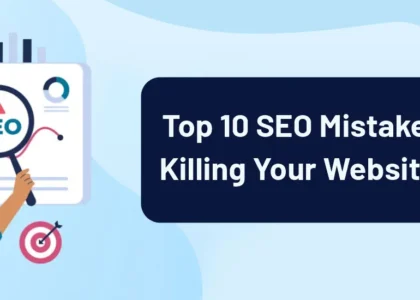Image SEO
Image SEO is the process of optimizing images to help them rank higher in Google Image Search. It involves using the right file names, alt text, structured data, and compression techniques to make images more search-engine friendly.
If your images aren’t ranking, it’s not just about their quality—Google considers multiple SEO factors before displaying them in search results. In this guide, we’ll explain why your images aren’t ranking and give you simple, actionable Image SEO tips to fix the problem. By the end, you’ll have a clear strategy to make your images more visible in Google Search.
Why Aren’t Your Images Ranking on Google?
Before fixing the problem, let’s first understand why your images aren’t ranking. Here are the most common reasons:
1. Google Can’t Read Your Images
Google’s algorithm doesn’t “see” images as humans do—it reads image file names, alt text, and surrounding content to understand what the image is about.
✅ Fix: Use descriptive filenames (e.g., best-seo-tips.jpg instead of IMG1234.jpg) and write clear alt text.
2. Missing or Weak Alt Text (Image Alt Text)
Alt text (alternative text) tells Google what your image is about. Without it, your image won’t rank well.
✅ Fix:
- Write a short but clear description.
- Bad Alt Text: photo1.jpg
- Good Alt Text: SEO expert analyzing Google rankings on a laptop
3. Slow Image Loading Speed
Large images slow down your website, and Google ranks slow websites lower.
✅ Fix:
- Compress images using tools like TinyPNG or ShortPixel.
- Use modern formats like WebP instead of PNG or JPEG.
4. Images Aren’t Mobile-Friendly
Google prioritizes mobile-friendly websites. If your images don’t adjust to different screen sizes, they won’t rank well.
✅ Fix: Use responsive images so they scale properly on mobile and desktop.
5. Google Hasn’t Indexed Your Images
If Google hasn’t crawled your images, they won’t show up in search results.
✅ Fix:
- Submit an image sitemap in Google Search Console.
- Use Google’s “URL Inspection Tool” to check if your image is indexed.
Advanced Image SEO Tips to Boost Rankings
1. Use Descriptive & SEO-Friendly File Names
Instead of using default names like IMG5678.jpg, rename images before uploading them.
✅ Example: Instead of IMG123.jpg, use best-image-seo-tips.jpg.
2. Optimize Image Alt Text for SEO
Alt text helps Google understand your images. Follow these best practices:
✅ Do: Be specific and natural. Example: “A digital marketer optimizing a website’s SEO on a laptop.”
❌ Don’t: Stuff keywords. Example: “SEO, Image SEO, SEO optimization, best SEO” (this won’t help!).
3. Choose the Right Image Format
Some formats load faster than others. Google prefers WebP and AVIF over PNG and JPEG.
✅ Best Image Formats for SEO:
- WebP (Best for quality + fast loading)
- AVIF (Even better compression than WebP)
- JPEG (Good for photos, but larger in size)
- PNG (Use only when you need transparency)
4. Use Structured Data (Schema Markup) for Images
Structured data helps Google categorize your images and can improve rankings.
✅ How to Add Image Schema (Example JSON-LD Code):
{
“@context”: “https://schema.org/”,
“@type”: “ImageObject”,
“contentUrl”: “https://example.com/best-image-seo.jpg”,
“description”: “An SEO expert optimizing website rankings with advanced tools.”,
“name”: “Best Image SEO Practices”
}
5. Create an Image Sitemap & Submit It to Google
An image sitemap tells Google where to find your images.
✅ Steps to Create an Image Sitemap:
- Use Google Search Console to check if images are indexed.
- Add this code to your XML sitemap:
<image:image>
<image:loc>https://example.com/image-seo-guide.jpg</image:loc>
<image:caption>Best Image SEO Tips</image:caption>
</image:image>
- Submit the sitemap to Google.
6. Optimize for Google Lens & Visual Search
Google Lens is a tool that allows users to search using images instead of words. If you optimize your images properly, they can rank in visual search results.
✅ Fix:
- Use high-quality, unique images.
- Add detailed alt text to explain what’s in the image.
Keep image backgrounds clean so Google can easily recognize the subject.
Common Image SEO Mistakes to Avoid
❌ Uploading large, uncompressed images → Slows down your site.
❌ Using generic alt text like ‘image.jpg’ → Google doesn’t understand what the image is about.
❌ Keyword stuffing in alt text → Makes your site look spammy.
❌ Not using an image sitemap → Google may not find your images.
Conclusion: Make Your Images Rank & Boost Your SEO
Image SEO isn’t just about adding pictures—it’s about helping Google understand them so they rank higher in search results.
Key Takeaways:
✅ Use SEO-friendly file names (like best-seo-tips.jpg)
✅ Write descriptive alt text (not just keywords)
✅ Compress images with WebP or AVIF for faster loading
✅ Submit an image sitemap for better indexing
✅ Optimize for Google Lens & Visual Search
Need Help with SEO?
If you’re struggling with image SEO or need expert SEO services, our team at Arrowpace is here to help! We offer the best SEO services in India to improve your rankings and boost your online presence.





